How to Get Rid of Stink Bugs: Your Complete Elimination Guide

The sight of a stink bug lurking around the home is enough to bother you. But when you notice a whole family has moved in, that’s a sign that it’s time to take action.
Once stink bugs hide indoors, they slowly settle in for the winter, invading warm spaces like in beds, on top of countertops near the toaster or coffee maker, and even in the shower. They’re cringy little critters, to say the least.
The biggest issue about these insects is that you can’t kill them with a paper towel or suck them up with a vacuum as you would if you spotted another creepy-crawly bug. When threatened, stink bugs emit a fluid as a defense mechanism, which has a pungent smell (hence the name “stink bug”), and said fluid can spray up to several inches away from where the bugs are planted.
If you’re in the midst of a stink bug home invasion, follow this guide to get them out, odor-free.
Photo via Shutterstock
What Are Stink Bugs?
Stink bugs are relatively new to America, having hitched a ride on shipping containers coming from China in the mid-1990s. The bugs get their name from the unpleasant smell they give off when they feel threatened or when they’re crushed.
The odor is foul, relatable to rotting fruit and paper-mill pulp. Even worse—it lingers. The small, marble-brown marmorated critters are about ⅝-inch long and feature a shield-shaped body with a broad abdomen, six legs, and three body segments.
Are Stink Bugs Dangerous?
Stink bugs are an invasive species that smell terribly when provoked, but they don’t bite, sting, or pose a health risk.
While they don’t spread disease or cause structural damage, they do threaten the agricultural industry as they destroy crops by feeding on seedlings and plant fluids, resulting in stunted growth and even plant death.
Farmers are especially plagued by stink bugs, as these insects are especially drawn to soybean and corn plants.
Why Do I Have Stink Bugs?
Unlike some pests that are attracted to sweet smells or moist areas, stink bugs simply come indoors to search for warmth as the seasons change. Shorter days and colder temperatures in winter send stink bugs scuttling for shelter through cracks and crevices in your home.
When spring hits and temperatures rise, stink bugs that hunkered down in your home all winter begin looking for ways to escape back to the great outdoors to find plants to feed on.
Stink bugs are also attracted to light sources (like a porch light), where they like to cuddle up and keep warm on cool spring and summer nights.
Signs of a Stink Bug Infestation
Finding large numbers of live or dead stink bugs is a telltale sign of an infestation, say the professionals at National Pest Management Association. “Stink bugs will turn up on sunny sides of homes where they warm themselves.”
You likely won’t smell these bugs before you see them, since they only emit their defense tactics (a.k.a. their smell) when they feel threatened. However, that’s not to say that unknowingly stepping on one of these critters would release a noticeable smell.
Growers can detect an infestation of these agricultural pests if they see damage to vegetable plants and fruit trees. You will likely see holes where the bugs have bitten through to feed on the plant or notice that plant leaves and fruits have been misshapen and that young plants have stunted growth.
Photo via CreekLineHouse
How to Get Rid of Stink Bugs with Hairspray
There are many ways to get rid of stink bugs. For each method, your first step should be to examine the potential entry points of your home, like openings around windows and doors, where stink bugs can wiggle their way inside. Then, seal up any areas in question. Now it’s time to tackle the stink bugs directly.
Method one is hairspray! You heard us right: hairspray. This household item will disorient and paralyze stink bugs so they don't get triggered and release their defensive smell.
Tools and Materials Needed
- Hairspray
- Paper towel
- Vacuum
- Garbage bag
- Cleaner
- Towel
1. Use Hairspray
If you see a singular stink bug, spray it with hairspray to disorient and paralyze the bug. Then, carefully use a paper towel to pick up the bug without squishing it (which will release that foul smell). Flush it down the toilet.
2. Vacuum
If you spot a clan of stink bugs, still cover them all in hairspray, but skip the paper towel and go straight for the vacuum. Once you’ve gathered them up in the vacuum, immediately dump the contents into a garbage bag and tightly seal it. Toss out on garbage day.
3. Clean
Use the appropriate surface cleaner wherever you sprayed the hairspray to clean up leftover hairspray residue.
How to Remove Stink Bugs with Vinegar and Soap
A soapy vinegar solution will not only drown a stink bug (or multiple), but the smell of the solution will also deter future stink bugs from making a home in the area where it's sprayed.
Tools and Materials Needed
- Funnel
- Spray bottle
- Hot water
- 1 cup white vinegar
- ½ cup dish soap
- Towel
1. Create the Solution
Fill a spray bottle with two cups of hot water, one cup of white vinegar, and ½ cup of dish soap.
2. Spray the Bugs
Spray the stink bugs directly with the solution to drown the bugs and gently pick them up with a paper towel and flush them down the toilet. You can also spray the solution on perceived entry points of your home—the vinegar smell should repel the bugs.
Photo via Shutterstock
How to Prevent Stink Bugs from Getting Indoors
Since stink bugs love to enter homes and buildings through small cracks and crevices, your best defense is to seal cracks around entry points in late summer.
The National Pest Management Association recommends using a good-quality silicone or silicone-latex caulk to seal the cracks around your home.
Typical stink bug entry points include:
- Door and window frames
- Electrical outlets
- Light switches
- Ceiling fans and light fixtures
- Skylights
- Siding utility pipes
- Chimneys
- Underneath the wood fascia behind gutters
Also, replace or repair damaged screens on doors and windows. Stink bugs are attracted to light, so change exterior lighting to yellow bulbs or sodium vapor lights.
How to Repel Stink Bugs with Essential Oils
Essential oils work wonders in the home for many things: One of them deterring stink bugs. Keep reading to learn how to repel stink bugs with essential oils.
Tools and Materials Needed
- Essential oil of choice (see below for suggestion)
- Warm water
- Spray bottle
1. Make the Solution
Mix up a ratio of one teaspoon of essential oil per two cups of warm water in a spray bottle. Research has found that clove oil is one of the most effective at deterring stink bugs.
2. Spray Entry Points
Spray the solution around doorways and windows— strong-smelling essential oils will deter stink bugs.
Getting rid of stink bugs can be a challenging task, but by following the tips and methods outlined in this guide, you can effectively eliminate these pesky pests from your home.
Do you have any tips for getting rid of stink bugs? Share them below!
Enjoyed the project?
Comments
Join the conversation
-
 Wendy Matchett
on May 25, 2023
Wendy Matchett
on May 25, 2023
We have a wood stove. When we see a stink bug, we get it with a tissue, throw it in, and light the tissue on fire. A few years ago, when we had an invasion(!) we put water in the shop vac and vacuumed them into it. They came down the chimney.
-
-



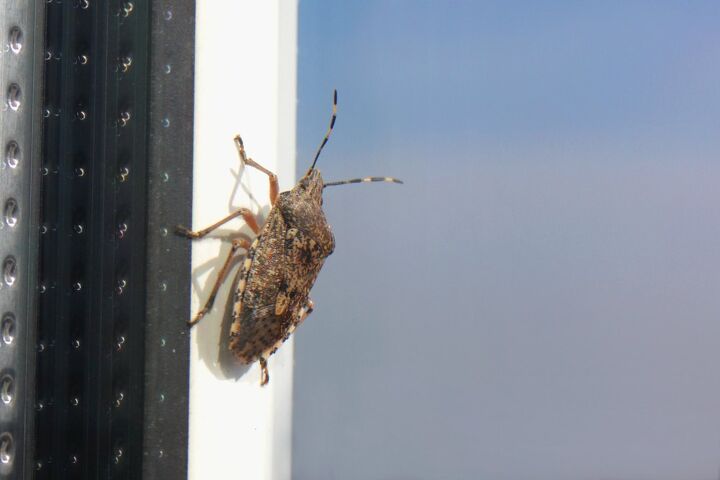




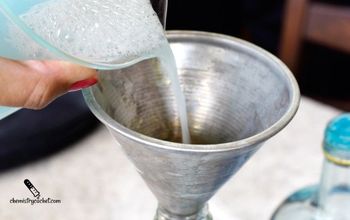
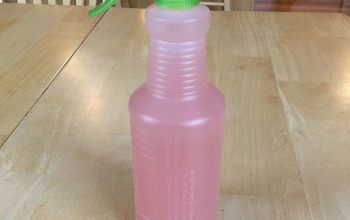

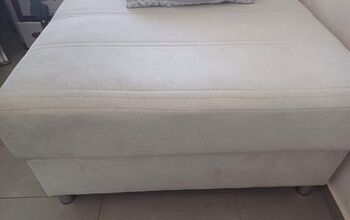
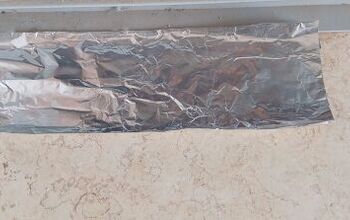

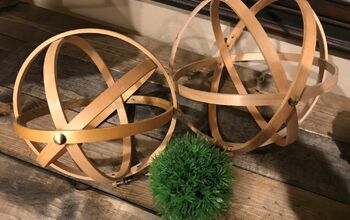



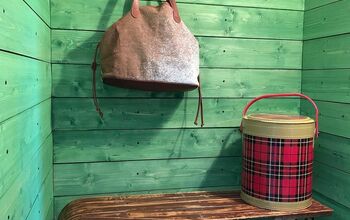
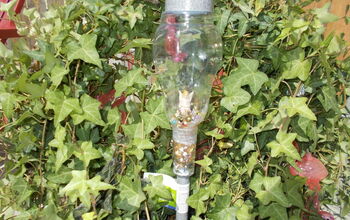

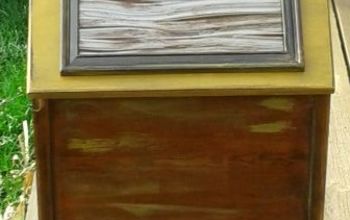


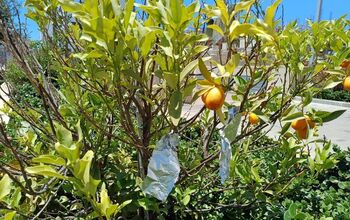
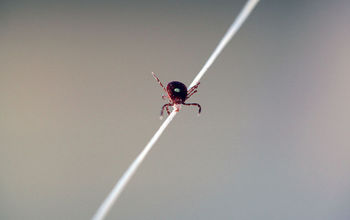
Frequently asked questions
Have a question about this project?